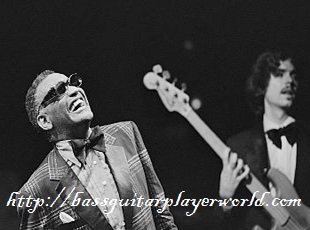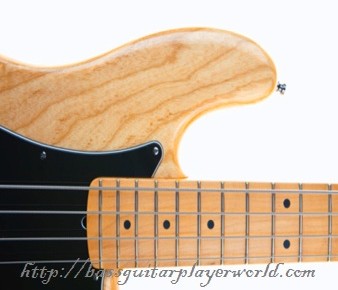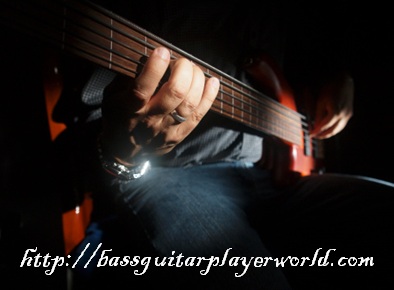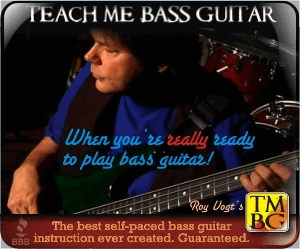Is Sight Reading Necessary for Bassists?
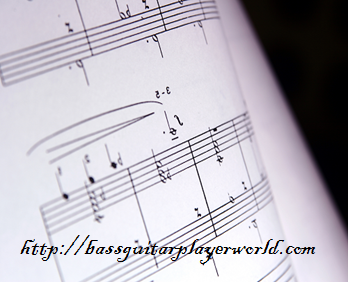 Arguing about what qualities a musician ought to have is pointless. Who is to decide whether a bassist should master different slapping techniques or playing fretless? As the requirements of the given musician’s environment and goals vary, so will the needed qualities and capabilities.
Arguing about what qualities a musician ought to have is pointless. Who is to decide whether a bassist should master different slapping techniques or playing fretless? As the requirements of the given musician’s environment and goals vary, so will the needed qualities and capabilities.
Sight reading is very similar: it is definitely not part of the basics for the majority of bassists. The journey from learning what a pentatonic scale is to sight transposition is rather long and quite cumbersome.
Let us take a closer looks at the different aspects of sight reading while trying to answer the question raised in the title above.
So, What Exactly is Sight Reading?
The concept of sight reading covers “the ability to read and produce both instrumental and vocal music at first sight”. Obviously, this skill is rather complex. First of all, it depends on a rather good short-term musical memory. Also, sight reading requires a lot of practice and experience.
There is no such musical memory that is able to make you play something that you have not practiced before. That is, in its most simple state, sight reading consists of a very good short-term memory and probably years of rigorous practice.
The basic idea of sight reading is often broken down into more accurate concepts. As such, sight reading can also refer to only the ability to read music and hear the sounds inside your head. Sight-singing refers to the vocal reproduction of music while sight playing refers to being able to actually reproduce the given musical piece.
What Kind of Bassists Need This Skill?
 It should not surprise you that musicians playing different genres have different average levels of sight reading capabilities. Generally speaking, those playing classical music more often have a very high level of sight reading capacity; on the other hand, they almost never improvise.
It should not surprise you that musicians playing different genres have different average levels of sight reading capabilities. Generally speaking, those playing classical music more often have a very high level of sight reading capacity; on the other hand, they almost never improvise.
Then we should take a look at all the jazz bassists who seem to do nothing but improvisation day in and day out. You would be surprised how well-prepared and well-trained these funky musicians are: most of them also have rather good sight reading skills.
When it comes to pop music and rock, the market of bassists is quite divided. Those who are band members and play a certain portfolio over and over again are unlikely to be able to sight read. However, studio musicians are able to sight read at an outstanding level: actually, the majority of the music that you hear on MTV and the likes are played by top studio musicians at the first sight.
What Should a Bassist be Able to Do?
We have to be able to make difference between the different idioms that bassists should be able to sight read. For example, probably any experienced bassist is able to reproduce a simple succession of common chords. As the music to be played becomes more and more complex, less and less bassists will be able to reproduce it at a first glance. It probably takes at least master’s degree in music to sight read a slap bass solo with all the different signs referring to dynamics and groove.
Taking Sight-Reading to a New Level
There are some situations, especially live gigs, when musicians have to adapt to each other, to the vocal capabilities of a new singer, et cetera. In these situations they might have to be able to play some pieces in a different key.
Sight transposition is the technique of reading music in a certain key while playing it in another key at first sight.
Even though these skills might seem spare at times, they can actually spare you some time when it comes to being productive on the stage, in the rehearsal room or in the studio.
Get The Freedom To Learn What You Want Anytime, Anywhere
JamPlay gives you the best of both worlds by offering highly structured curricula and a variety of teachers each covering various musical styles for you to learn from. Their video lesson quality is phenomenal and showcases more than 5 different camera angles!
With lessons taught by renowned players like Billy Sheehan, you can now see the exact finger placements and mimic techniques used by the legends themselves.
Related Articles
Comments are closed.

